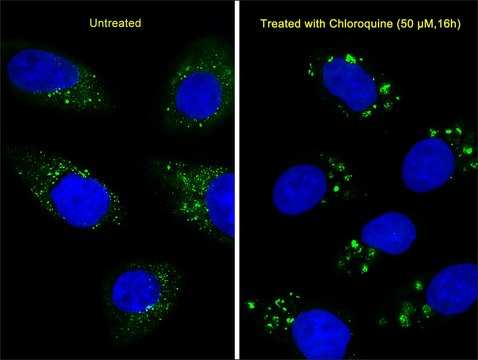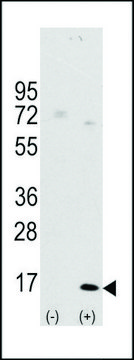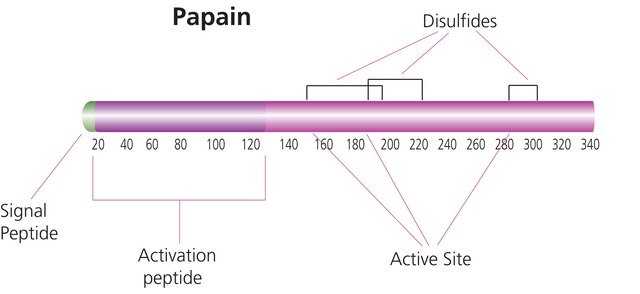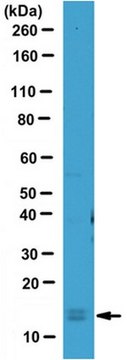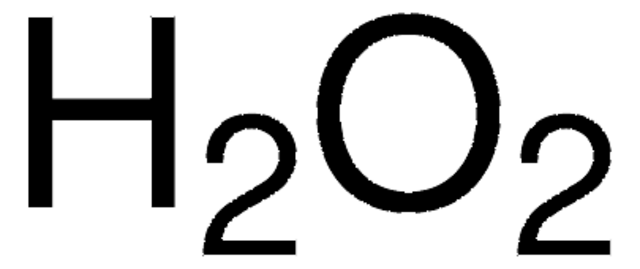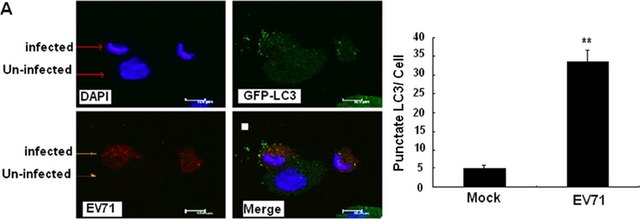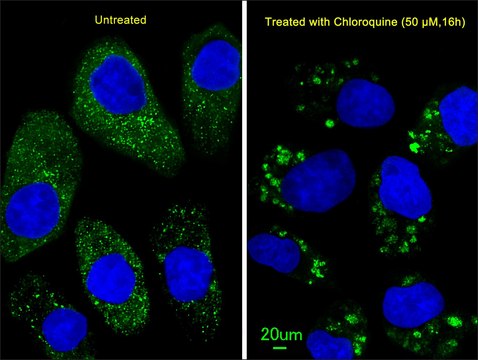SAB1305638
ANTI-LC3 (APG8A) antibody produced in rabbit
IgG fraction of antiserum, buffered aqueous solution
别名:
Autophagy-related protein LC3 A, Autophagy-related ubiquitin-like modifier LC3 A, MAP1 light chain 3-like protein 1, MAP1LC3A, Microtubule-associated proteins 1A/1B light chain 3A
登录查看公司和协议定价
所有图片(1)
About This Item
UNSPSC代码:
12352203
NACRES:
NA.41
推荐产品
生物来源
rabbit
质量水平
抗体形式
IgG fraction of antiserum
抗体产品类型
primary antibodies
克隆
polyclonal
表单
buffered aqueous solution
分子量
14272 Da
种属反应性
human
技术
immunofluorescence: 1:200
western blot: 1:1000
NCBI登记号
UniProt登记号
运输
wet ice
储存温度
−20°C
靶向翻译后修饰
unmodified
基因信息
human ... MAP1LC3A(84557)
一般描述
The gene autophagy-related protein 8A (APG8A), also referred to as MAP1LC3A (microtubule associated protein 1 light chain 3 α), is a homologue of Apg8p necessary for autophagy in yeast. The cytosolic form of the protein, upon processing, gets localized to the autophagosome membranes. The LC3 gene is mapped to human chromosome 20q11.22.
生化/生理作用
The gene MAP1LC3A (microtubule associated protein 1 light chain 3 α) or LC3 or autophagy-related protein 8A (APG8A) encodes a protein that serves as a marker of autophagosomes. It is found to be expressed on surviving oligodendrocytes in Nasu-Hakola disease brains and may be involved in the induction of oligodendrogliopathy.
外形
Supplied in PBS with 0.09% (W/V) sodium azide
免责声明
Unless otherwise stated in our catalog or other company documentation accompanying the product(s), our products are intended for research use only and are not to be used for any other purpose, which includes but is not limited to, unauthorized commercial uses, in vitro diagnostic uses, ex vivo or in vivo therapeutic uses or any type of consumption or application to humans or animals.
未找到合适的产品?
试试我们的产品选型工具.
储存分类代码
10 - Combustible liquids
闪点(°F)
Not applicable
闪点(°C)
Not applicable
法规信息
新产品
ITCH is a putative target for a novel 20q11.22 amplification detected in anaplastic thyroid carcinoma cells by array-based comparative genomic hybridization.
Ishihara T, et al.
Cancer Science (2008)
LC3, an autophagosome marker, is expressed on oligodendrocytes in Nasu-Hakola disease brains.
Satoh J, et al.
Orphanet Journal of Rare Diseases (2014)
我们的科学家团队拥有各种研究领域经验,包括生命科学、材料科学、化学合成、色谱、分析及许多其他领域.
联系技术服务部门
